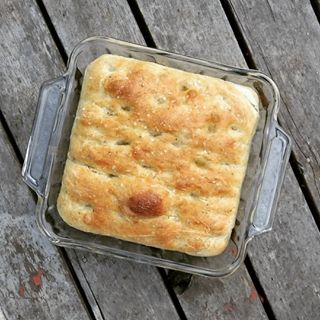
There is a recipe for rice crackers in the Eleven Madison Park cookbook that really caught my eye. In a nutshell: over-cook some sushi rice, then roll it into a thin sheet between two pieces of parchment. Next, dry out the sheet of rice in a low oven or dehydrator. Once it is nice and hard, break into desired shapes and deep-fry. I was fascinated by this recipe because the procedure is identical to chicharrón but applied to a wildly different ingredient. What other starches or grains could this be applied to? Lentils? Pearl barley? Pinto beans?
My first attempt at the recipe was only a moderate success. As the sheet of rice dried several cracks developed. The final dried … Continue reading.









